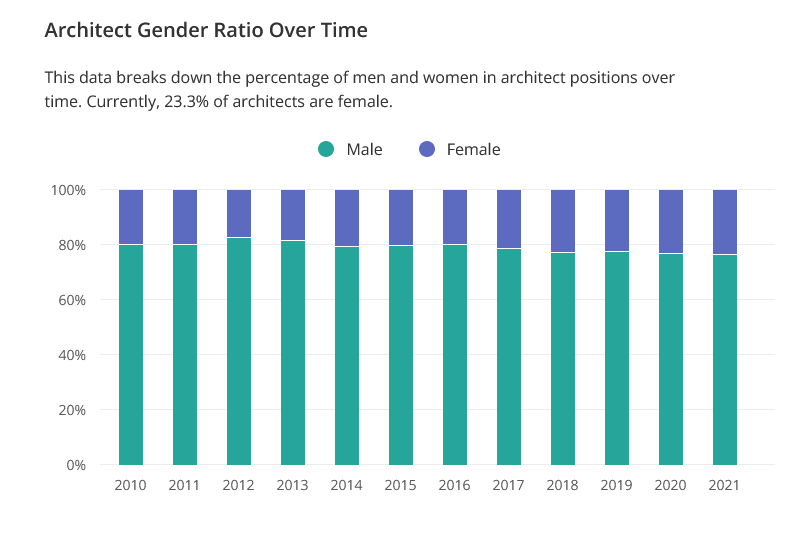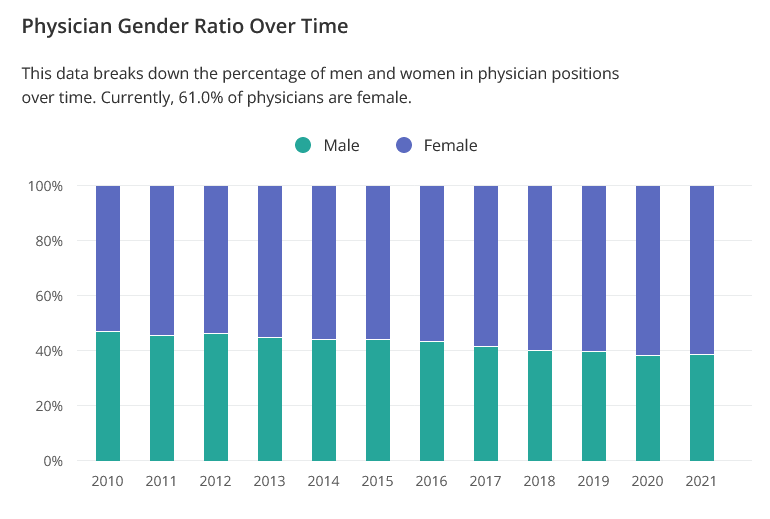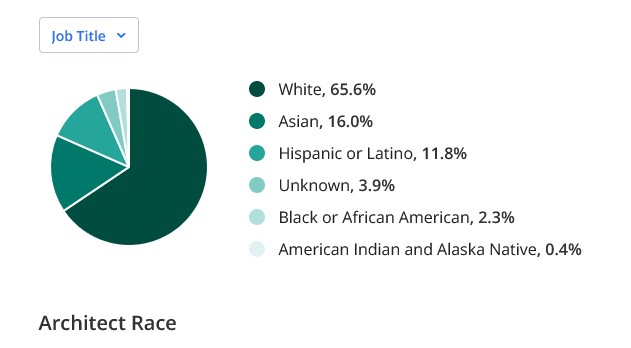
March is here, and with it Women’ s History month. You’ll have to forgive me if I’m less than excited. March is also Oscar month. And the month that the Pritzker foundation announces its annual recipient of architecture’s “most prestigious” award. We already know that the female director and star of the top grossing movie (in the world) for 2023 didn't make the cut to even be considered for an Oscar. Will 2024 finally be the year that the Pritzker foundation awards Denise Scott Brown and Lu Wenyu the prize that was awarded to their male partners, (who they also happened to be married to)? Or will it just be more Kenergy?
Warning: If you read my previous post on Crawford House you may experience whiplash reading this post. In my defense, the content of this rant/post is about gender equality in the architecture industry not about design. But I will say that my discussion of Venturi Scott Brown's work (in that post) only skimmed the surface. Now that I have delved into it a little more deeply, I've found a lot to like. I may even be able to say that it's possible that there might be some post- modern design that I don't hate.

Given the Barbie* moment that we're living in, it seemed appropriate (at least to me) to discuss the contributions of Denise Scott Brown -for whom POP Art and popular culture were a critical component of her work - in conjunction with Barbie. However, Greta Gerwig, Margot Robbie and Denise Scott Brown have more in common than just popular culture (and snubs). They all work in highly male dominated industries. In a field in which currently only 23% of the profession are women, despite 50% enrollment in architecture schools, the omission of the pioneering work of Denise Scott Brown by the most “prestigious” award in architecture is shocking but not surprising. To be clear, this is not about women being awarded the Pritzker; six women have been awarded the prize since its inception in 1979. Rather this is about awarding the male partner in an architectural partnership but not the female partner and co-founder. It is about misattributing the work of a woman to her male partner. Denise Scott Brown's Pritzker snub is old news, why even discuss it? The fact that there has been so little change is exactly why we should discuss it. The lack of interest in the Pritzker omissions is a reflection of the lack of interest in making the field of architecture more welcoming to women, minorities and the lgbtq community. The amount of licensed women in architecture has basically flat-lined since 2010. Oops my bad- there's been a 6% increase of women in architecture over the past decade! In only another 50 years architecture might achieve gender equality!
Surprised to hear that in 2024 architecture is still a male- dominated field?
What does that even mean? Aren’t most professional fields male- dominated anyway? Actually, they’re not.
As of 2021 in medicine, 61% of practicing physicians are female, in the legal profession 51.5% of lawyers are female. Higher education continues to be a slightly male dominated field with only 43% of professors identifying as female. A whopping 23% of practicing architects are female. (Up from 17% in 2015!) In 2023, 22% of all directors, writers, producers, executive producers, editors, and cinematographers working on the 250 top grossing films were women. Given that the architecture and film industries remain boys' clubs, it's not surprising that women continue to be marginalized within these industries. The statistics above are all taken from the career website Zippia, with the exception of the film statistics, which come from the San Diego Center for the Study of Women in Television and film. Zippia did not have any demographics regarding gender for film directors. The American Institute of Architecture compiled its own set of data and analysis in 2015 which supports the architecture data above. For more stats on women in film go here
Why are architects continuing to accept the Pritzker?

In 2013 Harvard Graduate School of Design students Arielle Assouline-Lichten and Caroline James started an on-line petition to press the Pritzker to retro-actively include Denise Scott Brown. It gathered 12,500 signatures, including those of previous Pritzker prize winners Richard Meier, Zaha Hadid, Wang Shu and Rem Koolhass, who described her exclusion as an “embarrassing injustice”. So why are architects still accepting its prizes? While Ms. Wenyu maintained in a 2014 interview that she "never wanted" a Pritzker in order to maintain her anonymity, Denise Scott Brown has made it clear that the Pritzker commitee owes her an inclusion ceremony at the very least.
The fact that architects have continued to proudly accept the award despite the continued omission of Denise Scott Brown (and Lu Wenyu), tells you everything you need to know about the field of architecture. Our male colleagues (and some female colleagues as well) claim to be appalled by the lack of women and minorities in architecture yet are unwilling to do anything about it that requires even the smallest sacrifice on their part. The $100K prize amounts to peanuts for the operating budget of the offices of any architect under consideration and almost every laureate has already attained a stratospheric level of prestige-that’s why they were shortlisted. Let’s face it, it would cost most of the nominees nothing to turn down the prize. Except their ego.
The Cult of the Starchitect

It is not simply the fact that Denise Scott Brown is female that puts hers squarely at odds with the Pritzker committee. As her essay, “Room at the Top: Sexism and the Star System in Architecture” from 1989 makes clear, Denise takes issue with the obsolete, and elitist fantasy that architecture is made by the hand of a single (male) genius. ‘The star system, which sees the firm as a pyramid with a designer on top, has little to do with today’s complex relations in architecture and construction. But, as sexism defines me as a scribe, typist, and photographer to my husband, so the star system defines our associates as “second bananas” and our staff as pencils.’ 1 The Pritzker Prize was created specifically to reward a single person (they had to alter the rules in 2001 to give a joint award to Jacques Herzog and Pierre de Meuron) and does nothing but reinforce the obsolete idea of the starchitect system.
The Fountainhead is a lie

Contrary to popular mythology, large scale architectural projects are never the product of a single hand, but of many hands. The design and coordination of such projects is incredibly complex and to not acknowledge the long hours (for little pay) put in by the worker bees is elitist and wrong. Especially wrong in 2024, as the cost of education and housing have skyrocketed, while wages of architects have not. And here is the real problem with the starchitect system; this ego-driven way of practicing is killing architecture. Architecture has long been practiced by wealthy white men, many of whom don’t need to make a living from their work. The consistent practice of under bidding rivals in a macho game of chess to get that project at any cost is commonplace. But while the firm may win the job in the short term, they are devaluing the industry in the long term. It is commonplace now for clients to ask for free work, making it harder for architecture firms to be profitable. As construction costs have sky rocketed post pandemic, the first fees to be cut in many building projects are the architects’, even though these fees are the smallest percentage of the overall budget. Most people have no comprehension of the number of hours and people it takes to design buildings. By continuing to prop up the obsolete fantasy of the lone genius, the Pritzker Prize is part of the problem.
Hey remember diversity and inclusion?

Wage theft is another by-product of this cult of genius. Many prestigious design firms are notorious for not paying interns and for paying wages that are vastly below industry standards, because the prestige of having the name of a starchitect on your resume is valuable. It’s true that having a famous name on your resume will open doors and command respect. But this also means that the only people who can afford to work in prestigious offices are people who have a certain amount of family wealth to pay rent and eat despite earning little or no money. This makes it extremely difficult for minorities and people of color to work for these offices and is likely a contributing factor to the appalling low numbers of people of color in architecture.
According to the Pritzker website the original mission was to ”encourage and stimulate not only a greater public awareness of buildings but also …inspire greater creativity within the architectural profession.” The Pritzker has certainly been successful in its mission of creating greater public awareness of a few big names, but does that really help the profession? The foundation could start by caring about the industry as a whole, not just the lucky few who make it to the top of the pyramid, thanks in no small part to the work of their colleagues. They could broaden the criterion for consideration to include mentorship, stewardship of the environment, partnership and preservation of under served communities, and creating an ethical and equitable workplace. This could open up the prize to a more diverse group of nominees who might actually really benefit from both the prize money and the prestige. I would also hope that any office that doesn’t pay all employees a wage commensurate with industry standards would be disqualified from consideration. To be fair, some of the more recent laureates such as Yvonne Farrel, Shelley McNamara, Diébédo Francis Kéré, Anne Lacaton and Jean-Philippe Vassal seem to indicate that the committee is beginning to consider some of these qualities but the process is so opaque that we don't really know what the criterion for consideration is.
Denise Scott Brown is kind of a Badass

Although I am not a fan of postmodern architecture nor of Learning from Las Vegas, no self-respecting architect or architectural historian can deny the impact of the work of Venturi Scott Brown on the field of architecture and culture. I can think of no other architect of similar renown who has a similar body of both written and built work, in both architecture and urban design who has not received a Pritzker. But her focus on community and social justice, long before many architects considered that important work, is what most differentiates Denise Scott Brown from her peers. In her prescient 1989 essay she had this to say: ‘A more conserving and nurturing (female?) outlook is being recommended to the profession by urban planners and ecologists, in the name of social justice and to save the planet.’ 2
Peak Ken Pritzker?

In 2013 the rationale for not awarding her the prize retroactively was that since some of the original jurors who awarded the prize to her partner were now deceased, the foundation could not change the original decision. There is no need to change the original decision. Denise Scott Brown merits her own Pritzker. Now that three out of eight jury members are women, not to mention a Supreme court justice, I am confident that the committee will find a way to right this wrong. I hope that architect Lu Wenyu will also be awarded a Pritzker for the prize-winning work of the office that she co-founded. She can make the decision for herself if she wishes to decline it. Architecture (and of course the world of Fine Art as well) has a long history of
misattributing work done by women to their male colleagues or peers. Awarding both Denise Scott Brown and Lu Wenyu the Pritzker for the award-winning work they have done and for which their male colleagues have been recognized, would be a great first step toward making amends. Until then The Pritzker Prize will remain a relic of an obsolete architectural fantasy that is just so PEAK KEN. Why on earth would anyone want to be associated with that?
UPDATE: Riken Yamamoto was awarded the 2024 Pritzker. I guess the 2023 retrospective about DSB's work was supposed to take the place of a Pritzker? Very,very disappointing but yet not surprising, given the Kenergy of the field of architecture.
Need a drink after reading this? How about a Pink Lady?
So what's up with the duck? In 1968 Denise Scott Brown and Robert Venturi collaborated on an essay called "On Ducks and Decoration", using the example of The Big Duck Building pictured above as an example of a building "that is a symbol"3, whose shape implies the content within, in contrast to "the decorated shed" a type of building that "applies symbols". The Big Duck was built by a farmer as a farmstand to sell ducks, it is a very literal symbol of the content within. In contrast they cite the example of the Palazzo Farnese as a decorated shed, "the conventional shelter that applies symbols". 4 This essay became hugely influential or as the kids would say- it went viral.
1( Originally published as “Room at the Top? Sexism and the Star System in Architecture,” in Architecture: A Place for Women, ed. Ellen Perry Berkeley and Matilda McQuaid (Washington, DC: Smithsonian Institution Press, 1989), 237–46).
2. IBID 3. Venturi, Scott Brown, Izenour. Learning From Las Vegas The MIT Press 1972 4. Ibid.
Let's Shop!




























Comments